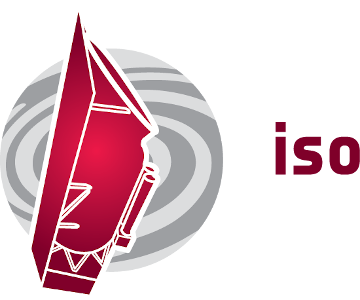| Description |
scientific abstract molecular gas within a few hundred parsecs of the galactic center displays considerable non-circular motion, perhaps as a response of the gas to a central bar potential, or as a result of one or more violent releases of energy in the past. the tumult characterizing molecular cloud kinematics there is accompanied by strong shock interactions between clouds, or between clouds and the ambient medium. we propose to investigate, with 3.1 hours of iso time, two examples of large-scale shocks in the galactic center region: afgl 5376 and g-0.02-0.07. in case the galactic center is not visible, we propose instead to study the shock in b35 near the lambda orionis ring and to map the h2o distribution in the snr ic 443 for a total of 6 hr. afgl5376 is an unusually strong 25-micron infrared source which coincides with a remarkable vertical shock rising almost 100 pc above the galactic plane at a projected distance of 75 pc from the galactic center. the shock is inferred from a sharp discontinuity in the anomalous-velocity co emission at this location. g-0.02-0.07 is a series of compact hii regions aligned along the interface between the dense, massive 50 km/s molecular cloud and the sgr a east nonthermal radio source with which it is interacting. the stars in these hii regions may have formed as a result of cloud compression by a shock associated with the expansion of sgr a east, or as a result of the collision of two clouds. both systems provide an unprecedented opportunity to study shocks under very different conditions than encountered normally (large size, extreme velocities, large magnetic fields). since shocks radiate primarily in the infrared, iso will be uniquely qualified to study these regions and to assess existing shock models in terms of their predictions for line strengths. comparison with more standard shocks such as orion/kl and ic 443 should help establish the importance of the high velocities and strong fields. it will also be useful to compare the two proposed sources with each other, inasmuch as their shocks may result from two different causes. in the case of the sagittarius hole, both of our prime objects will be unobservable. we propose in that case to observe the same lines in the shock in the molecular cloud b35, which lies near the lambda orionis ring. in addition, we propose to map the h2o distribution in the ic 443 snr shock in a few lines. although h2o will be observed in ic 443 in other proposals, these are limited to only a few positions chosen on the basis of co observations. observations of e.g. c i show that the various shock tracers do not necessarily peak at the same position. maps of the various clumps b, c, and g in a few h2o lines would provide an unbiased view of the h2o distribution through a shock (and its precursor) and would provide independent tests of the models. observation summary we propose to observe the fine structure lines of fe i, fe ii, fe ii, s i, si ii, cl ii and ni ii, and the pure rotational lines of h2, hd, oh and h2o using sws aot02 and aot7 at two positions within afgl 5376 and one within g-0.02-0.07. in addition, we will observe the longer wavelength lines of o i, n ii and c ii and selected lines of h2o, oh and co using the lws aot04 with 1 min/line. at position afgl 5376-1, we will search for the atomic lines only. the detailed lines are summarized in table 1 in the scientific justification section. the requested s/n on the continuum is 50-100 for the grating. fabry-perot observations will be attempted for a few lines at s/n=10 on the expected line strength. concatenation of the sws aot2 and aot7 observations is required in order to have the same orientation of the slit on the source. it is recommended for the lws observations in order to save overhead for slewing. in the case of the galactic center hole (spring launch), we propose to observe the same lines in the shock in b35. in addition, we propose to map the various clumps in ic 443 in the 179.527 mu o-h2o line with the lws (100 beam, aot02 or aot04) and in the o-h2o 4_41-3_12 line at 31.7715 mu with the sws (20x40 beam, most likely aot07). we estimate an integration time of 2 min/raster point including overheads, which would allow detection of lines with fluxes of 1e-15 w m-2 at a s/n>5 (sws-fp) and 1e-17 w m-2 at a s/n>5 (lws-grating). the predicted line strengths are uncertain due to the uncertain h2o abundance, excitation and beam filling factor. we therefore suggest to carry out these observations at prior. 3, so that we can use the results of the prior. 1 and 2 data of other ic 443 programs (in which the co-i is involved) to optimize the observing strategy. for example, if the lines are strong enough to be observed with the grating, we will use lws aot02 so that several lines (p-h2o at 100.9828, o-h2o at 108.0730 and 75.3804 mu) can be observed simultaneously. the ic 443 clump g will be sampled over a region of 1.5 x 3.0 (20 lws points at 50 spacing, 35 sws points at 30 step), and clumps b and c over 4 x 2 (32 lws points at 50 step, 15 sws points at 30 over smaller re |

